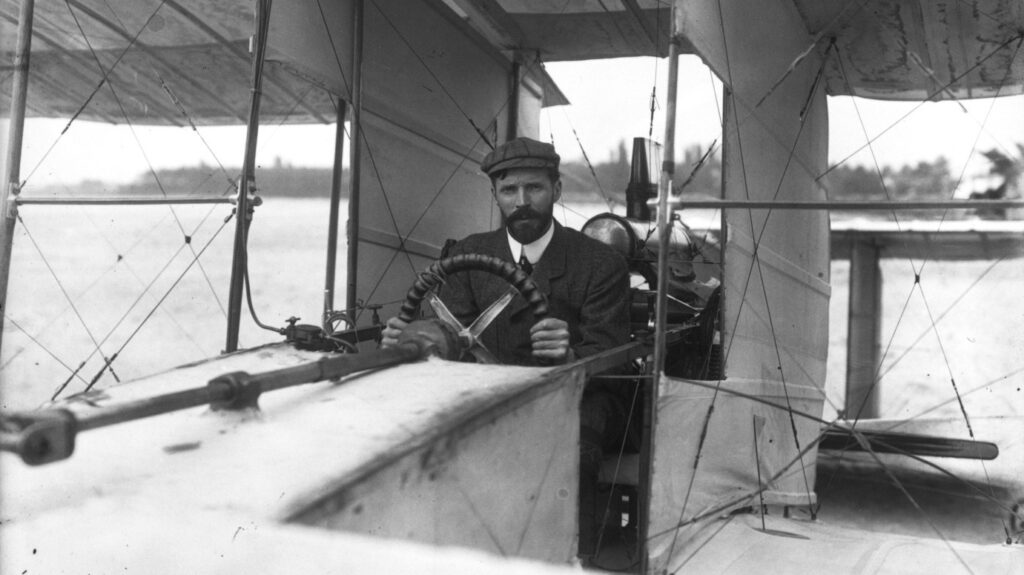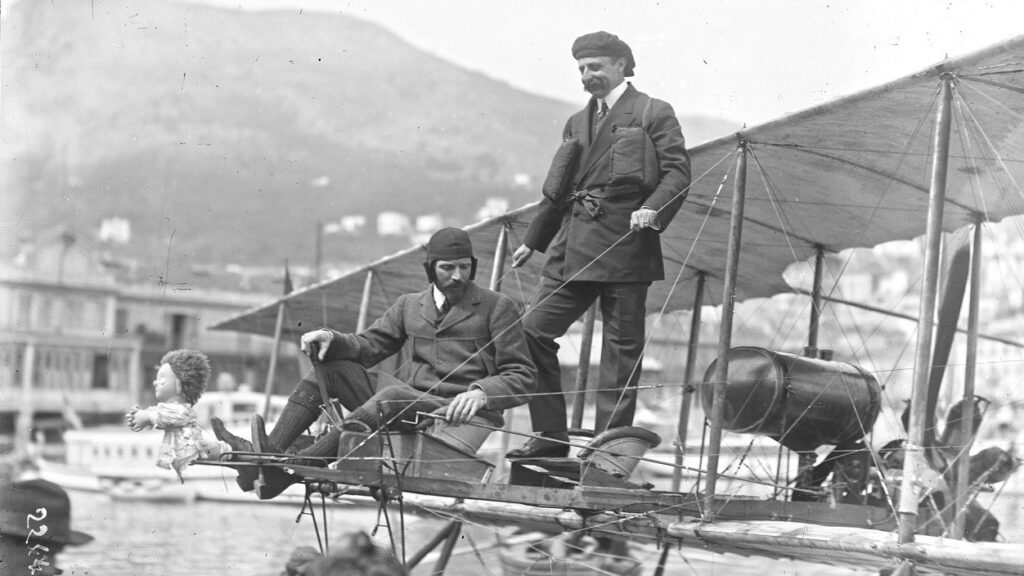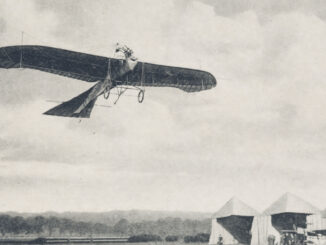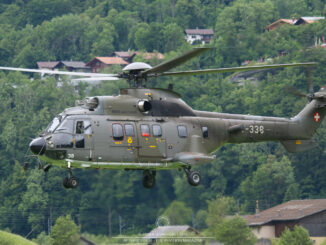 On 10th November 1907, French aviation pioneer Henri Farman, flew a distance of 1,030 metres with Voisin-made biplane. The flight lasted 1 minute and 14 seconds, thus Farman became the first European to stay in the air with heavier-than-air aircraft for more than one minute.
On 10th November 1907, French aviation pioneer Henri Farman, flew a distance of 1,030 metres with Voisin-made biplane. The flight lasted 1 minute and 14 seconds, thus Farman became the first European to stay in the air with heavier-than-air aircraft for more than one minute.
Henri Farman was a French-born British citizen. He was interested in technical innovations since his school years. At age of fourteen, Farman became a sport cyclist and shortly after became a champion. In the 1890s, Henri won several races, including the French Championships, made a bicycle trip from Paris to Madrid and, in 1895, set a new tandem bicycle record, together with his brother Maurice.
Then, the Farman brothers discovered their passion for motor racing and soon quit their cycling career to try their luck in car racing. They quickly became professional racers and won several domestic and international competitions. In 1902, Henri won the Paris-Vienna race in heavy category and next year was the third in Gordon Bennet Cup. Two years later, after a car accident that occurred during trials for the 1905 Gordon Bennet Cup, Henri decided to quit car racing. Shortly after, he was attracted by new passion – the aviation.
Henri Farman started his aviation career in 1907, with homemade gliders. After some successful flights, he decided to buy a powered aircraft. His choice fell on a Voisin biplane – the aeroplane, built at the beginning of 1907 by Gabriel Voisin. Initially, it was officially designated Voisin 1907 but nowadays is known by many names, such as Delagrange I, Henri Farman No. 1, Voisin-Faman I or just Voisin II.
During the autumn of 1907, Henri Farman kept practising quite extensively, with time adding some modifications to the Voisin´s construction. In October of that year, he made history of aviation with some long-distance flight, covering 185, 363, 403 and finally 771 metres.
Nowadays, it may seem ridiculous, but such those distances were considered as long distance at that time. The two first flights were awarded by Aero Club de France for exceeding 150 and 300 metres. The flight of 771 metres was the longest one made that year and won Farman the Ernest Archdeacon Cup, as well as another award from the French aero club, for exceeding 500 metres in the air.

After that successful October, Henri Farman continued his winning streak next month. On 10th November 1907, he made a flight for a distance of 1,030 metres that lasted 1 minute and 14 seconds. Farman became the first European to stay in the air with heavier-than-air aircraft for longer than one minute, the third man in the world to perform that stunt (after the Wright brothers), and finally it was the first time the aeroplane made a complete circular flight.
Regrettably, that flight was not officially witnessed and could not be recognized for the Deutsch-Archdeacon Prize (also known as the Grand Prix d’Aviation). The award was set in 1904 by Ernest Archdeacon and Deutsch de la Meurthe – a prize of 50,000 francs (approximately 450,000 EUR today) was offered to the first person to fly a circular course of one kilometre in a heavier-than-air aircraft.
Undaunted, Henri Farman continued with his efforts and eventually won the aforementioned prize in 1908. On 13th January he made the circular circuit, staying in the air for 1 minute and 28 seconds.
It was just the beginning of making the aviation history by Henri Farman. In March of 1908 he broke the record from January, flying the circular circuit of 2,004 kilometres. In October of the same year, Farman performed the first cross-country flight in Europe, on the distance of twenty-seven kilometres.
Over the next years, Henri Farman set several other distance and endurance world flight records, setting the bar at 180 and 232 kilometres, respectively. At that time, his aircraft was capable to stay in the air for almost five hours.
Finally, Henri and Maurice Farman decided to establish their own flying school and then the aircraft manufacturing factory. They made several popular civil and military aircraft, including the first long-distance passenger airliner, designated Goliath.
The Farman brothers retired from aviation industry in 1937, when French authorities nationalised the domestic aviation industry. Nevertheless, in the same year, Henri Farman accepted the French citizenship.
Henri Farman died on 17th July 1958, in Paris, at the age of 84. His brother Maurice followed him on 25th February 1964, at the age of 86.

Cover photo: Henri Farman, 30 May 1908 (source: gallica.bnf.fr / Bibliothèque nationale de France, ark:/12148/btv1b6911064c / Public domain)



